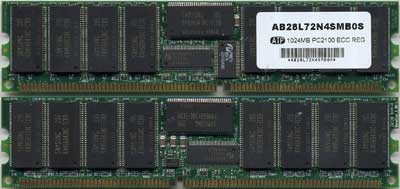Database Server CPU Comparison: Athlon MP vs. Hyper Threading Xeon
by Anand Lal Shimpi on April 4, 2002 1:59 AM EST- Posted in
- IT Computing
The Tests
As we've mentioned before, there are three databases that power AnandTech: the Web DB, the Ad DB and the Forums DB; we used all three databases to test these server CPUs.
The Web DB is where all of our content is stored; everything from news and reviews to our own internal article rankings are stored in this database. By far the majority of the transactions on this database are selects (reads). Remember that the web site only really offers one way interaction, the readers come to the site and read articles which are contained in this database. The articles are selected from the database and fed to one of the 4 web servers for assembly into a page for your browser. Internally, some update queries are also run, but they were not recorded in the test trace we ran. This database is the smallest out of the three; the DB was only 300MB when we ran the test.
The Ad DB is very similar to the web database in that quite a few selects are running. The select queries are used to pull the ads from the database for display in the user's browser. There are also a number of stored procedures that run along with the selects, but to keep things as simple as possible (at least for this comparison), we omitted them from the test trace. The Ad DB is noticeably larger than the web database, at a large 2.1GBs at the time of publication.
The final database is the Forums DB, which is by far the most transaction intensive database in the AnandTech Network. While the vast majority of the requests to the DB are in the form of selects (users reading categories and threads), there are significantly more inserts and updates (posting, thread/post counts, etc…) than in either of the other DBs. This database is also our largest, weighing in at just under 3GB during the testing and close to 8GB today (we used an older version of the DB from a few months ago).
In the past, when we used database server testing, it was done using a single trace run on the AnandTech Forums. While we're using two additional databases, the test methodology remains the same. We recorded a trace of transactions on each one of these databases for a set period of time. These were live recordings while the website and forums were being accessed just like they would on any normal day. The traces were then played back at full speed (as fast as the server test bed could replay them) and their playback times recorded. We divided the number of transactions replayed by the playback time and reported all scores in numbers of database transactions per second: the higher the better.
For our test bed, we setup a simple RAID 0 array (which would never fly in a real-world situation, no redundancy spells certain death) of two Seagate Cheetah X15 drives. While this gives us less I/O power than is in our current Forums DB made of 6 Quantum Atlas 10K II drives, it was enough for this limited test. In the future, we'll most likely move to a 4 - 8 drive test array as the benchmarks become more strenuous.

Two DIMMs, 2GBs - Click to Enlarge
The test beds were configured with 2GB of DDR266 SDRAM using two 1GB sticks. Since the E7500 chipset requires memory to be installed in pairs we had to use multiple DIMMs. Also remember that the dual-channel memory controller of the E7500 chipset only ran the memory bus at DDR200 speeds.










0 Comments
View All Comments